the place where Paleontology and Paleoanthropology meets Philately
Peru
Fossils, prehistoric animals, paleontologists, Natural History Museum on stamps and postmarks of Peru
| << previous country | back to index | next country >> |
Contents:
- Country overview
- Philately of Peru
- Official stamps of Peru related to Paleontology
- Other stamps of Peru to consider
- Commemorative postmarks of Peru related to Paleontology
- References
- Acknowledgements
Peru is a country in South America, situated on the western side of that continent, facing the South Pacific Ocean and straddling part of the Andes mountain range that runs the length of South America.
Peru is bordered by Ecuador and Colombia to the north, Brazil and Bolivia to the east, and Chile to the south.
Peru is a country that has a diversity and wealth not common in the world. The main attractions are their archaeological patrimony of pre-Columbian cultures and the hub of the Inca's empire, their gastronomy, their colonial architecture (it has imposing colonial constructions) and their natural resources (a paradise for ecological tourism). [R1]
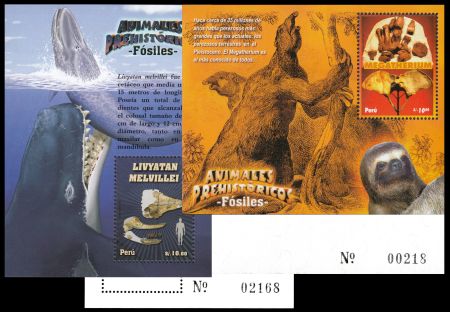
|
| Some numbered Mini-Sheets with prehistoric animals of Peru. MiNr.: 2233, 2599, Scott: 1598, 1798. |
Around 1860 Peru acquired a French-made device (the so-called "Lecoq" press) that was used to print, emboss and cut imperforate stamps from paper strips.
In 1866, Peru issued a set of definitive stamps depicted two different Lama specimens: Lama vicugna, Lama glama - one of the first stamps with animals.
Peru is very rich for fossil of prehistoric animals.
Between 2007 and 2017 Post Authority of Peru of the country, Serpost, issued one or two Mini-Sheets/Souvenir Blocks showing local fossils and reconstruction of prehistoric animal, mostly mammals almost every year.
Mini-Sheets/Souvenir Blocks of Peru have a serial number on the back side, see on the right.
FDCs of these stamps were issued in limited quantities. [R2]
Official stamps of Peru related to Paleontology: fossils, prehistoric animals, paleontologists
| 31.03.1992 "100th anniversary of death of Antonio Raimondi" [1] | 03.06.1999 "Geology of Peru" [2] | 03.10.2000 "Paleontology of Peru" |
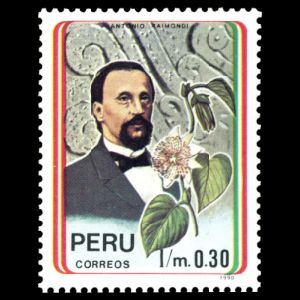 |
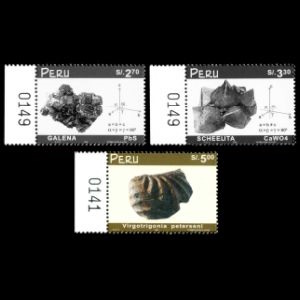 |
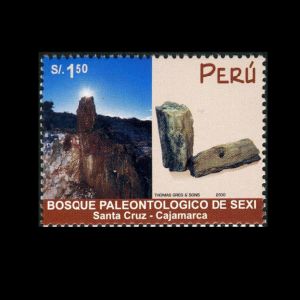 |
| 06.12.2004 "Prehistoric animals" | 18.04.2005 "115th anniversary of Antonio Raimondi" [1] | 16.01.2007 "Prehistoric Animals" |
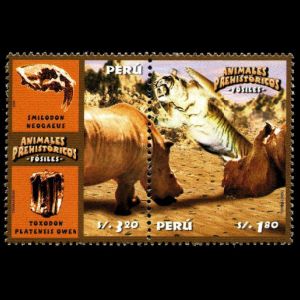 |
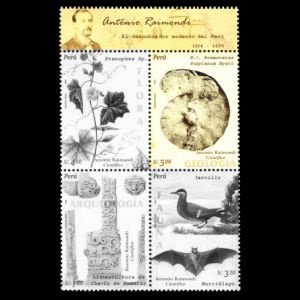 |
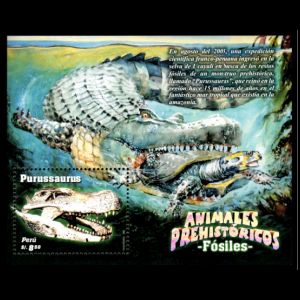 |
| 28.09.2007 "Prehistoric Animals" | 26.08.2009 "Prehistoric Animals" | 21.09.2010 "Prehistoric Animals" |
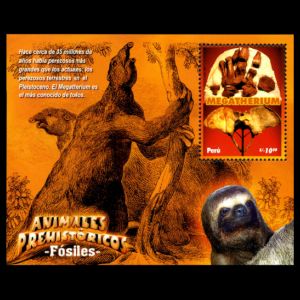 |
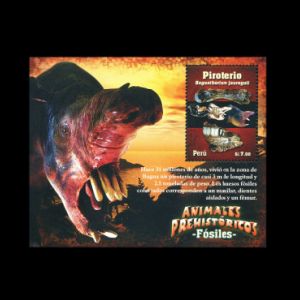 |
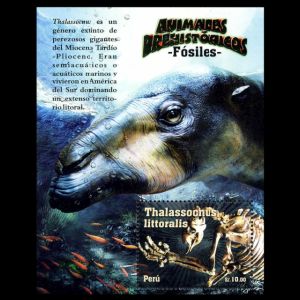 |
| 17.10.2011 "Prehistoric Animals" | 12.09.2013 "Prehistoric Animals" | |
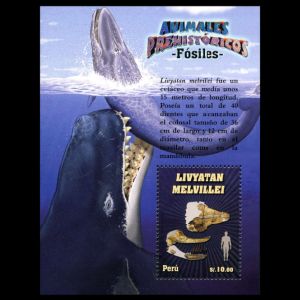 |
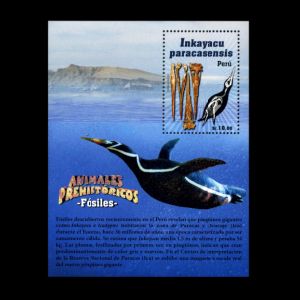 |
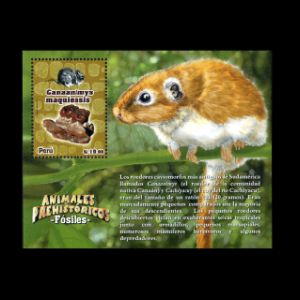 |
| 05.11.2014 "Prehistoric Insect" | 10.01.2017 "Prehistoric Animals" [2] | 14.11.2022 "Plesiosaur" |
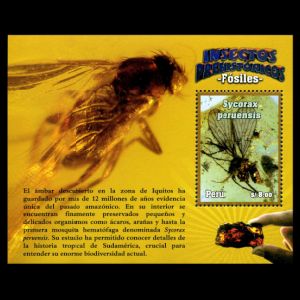 |
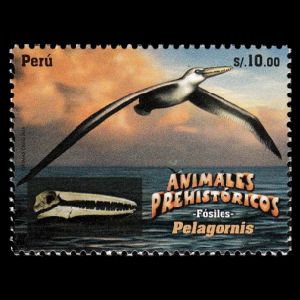 |
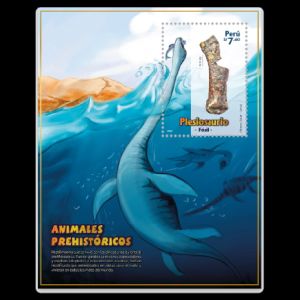 |
| 12.12.2023, "Megalodon" | ||
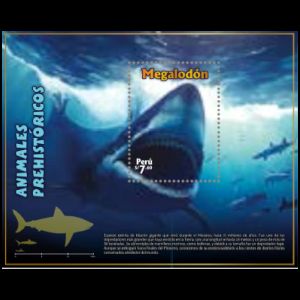 |
||
Notes:
[1] Antonio Raimondi (1826-1890), depicted on stamp 1992 and a block from 2005,
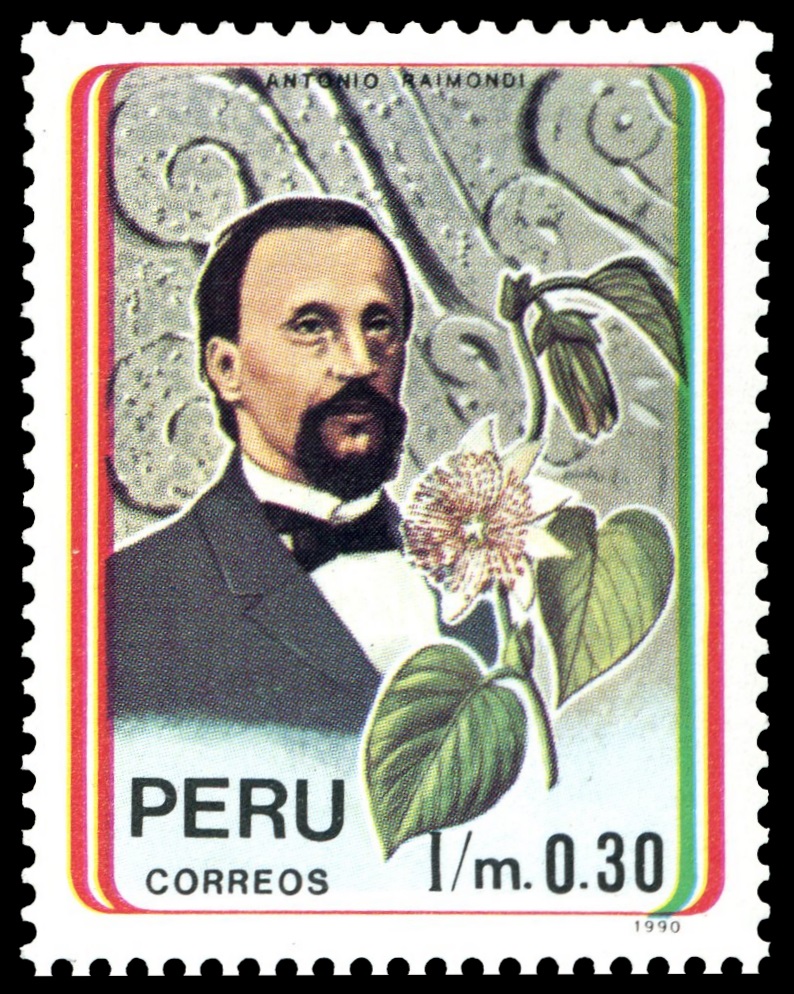
|
| Antonio Raimondi on stamp of Peru 1992. |

|
| Portrait of Antonio Raimondi on margin of a Mini-Sheet "115th anniversary of Antonio Raimondi" from Peru 2005 |
In 1850 he left Italy to escape the independence war in his country and came to Peru for research, scientific investigations and other observations; the decision for Peru was very emotional but as well deliberate.
Antonio Raimondi traveled more than 19 years in countless trips through Peru and explored the country and the people under different aspects of science. He investigated as well the impact of the Spanish presence on the Peruvians and their culture. He was well-respected during his lifetime and recognized for his collecting of plant and insect specimens, minerals, stones and fossils. He also drew maps and painted watercolors. [R3]
[2] At the end of 2016, the Post Authority of Peru, Serpost, presented several new stamps on their Internet site.
Most of these stamps did not arrive in the Post offices of Peru until the beginning of 2017.
The postmark for the FDC cover is dated January 10th 2017, as shown below:
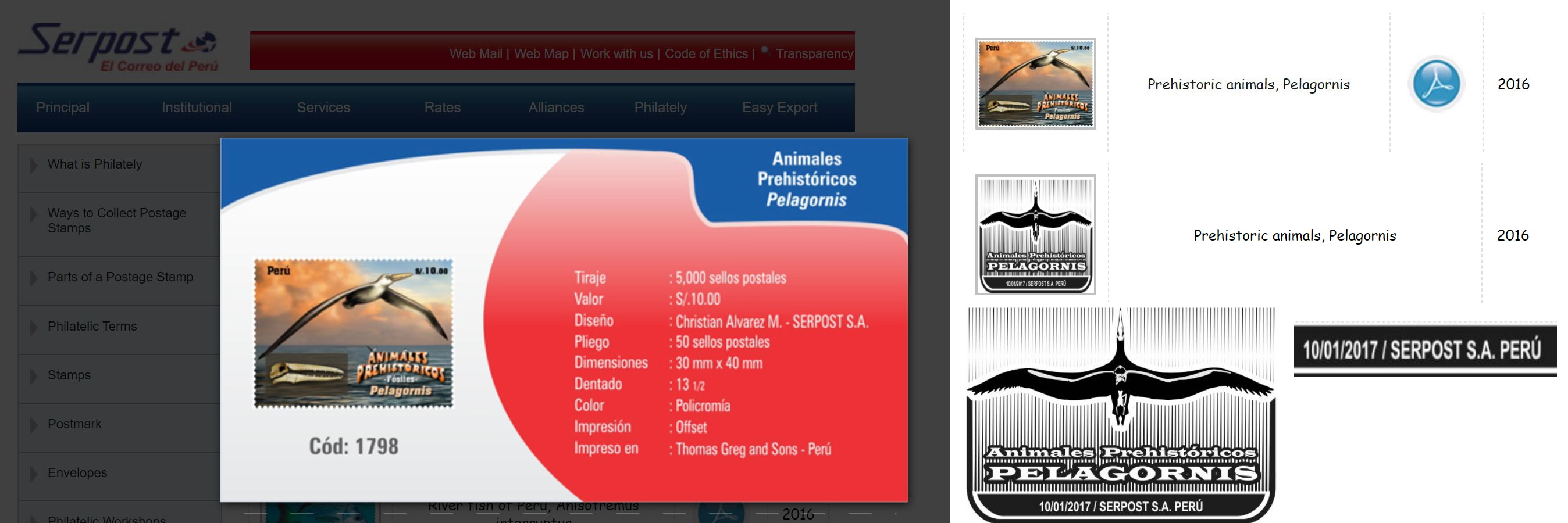
|
| Prehistoric animals, Pelagornis on stamp of Peru. According to Serpost it was issued in 2016, but the postmark from FDC dated 2017. MiNr.: 2754, Scott: |
Other stamps to consider: Natural History Museum
| 04.10.2013 "95th Anniversary of the Natural History Museum" [A1] | 11.02.2019 "100th Anniversary of the Natural History Museum" [A1] | |
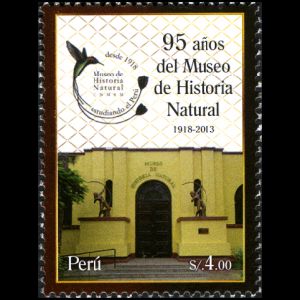 |
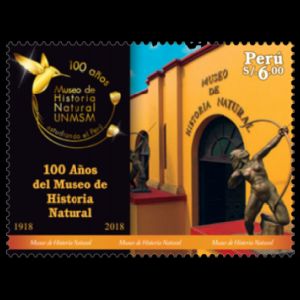 |
|
Notes:
[A1] The Natural History Museum (Museo de Historia Natural) in Lima, is Peru's most important museum of natural history.
It was established in 1918 and belongs to the National University of San Marcos.
The museum is repository of representative specimens of Peruvian fauna, flora and minerals, including exhibitions of mammals, primates, invertebrates, reptiles, amphibians, birds, plants, fossils, dinosaurs, fish and minerals. [R4]
Commemorative postmarks of Peru relate to Paleontology: fossils and reconstruction of prehistoric animals
Legend is here| 03.06.1999 "Geology of Peru" [2] | 03.10.2000 "Paleontology in Peru" | 06.12.2004 "Prehistoric animals" |
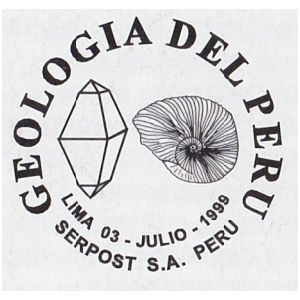 |
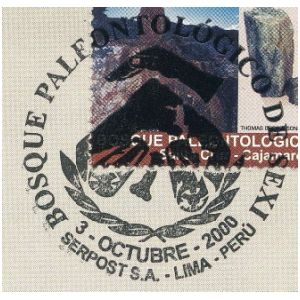 |
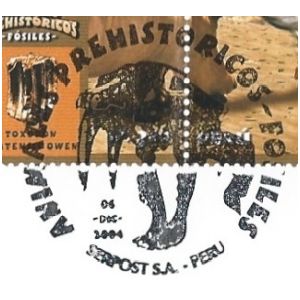 |
| 18.04.2005"Antonio Raimondi" [2] | 16.01.2007 "Prehistoric Animals" | 28.09.2007 "Prehistoric Animals" |
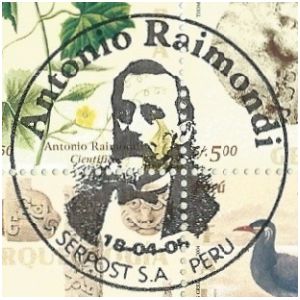 |
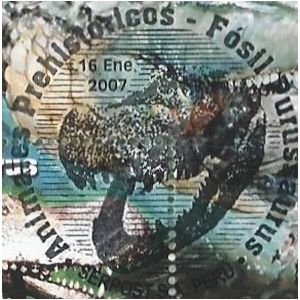 |
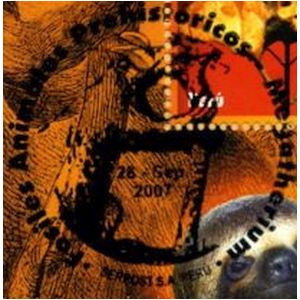 |
| 26.08.2009"Prehistoric Animals" | 21.09.2010 "Prehistoric Animals" | 17.10.2011 "Prehistoric Animals" |
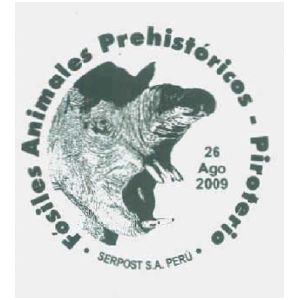 |
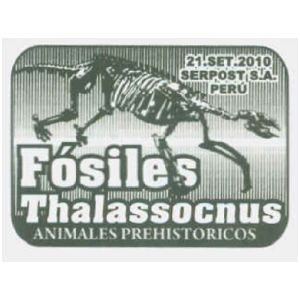 |
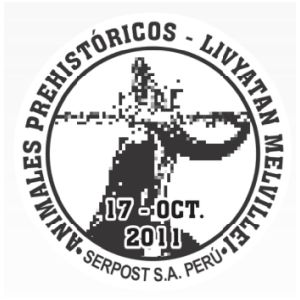 |
| 12.09.2013 "Prehistoric Animals" | 05.11.2014 "Prehistoric Insect" | |
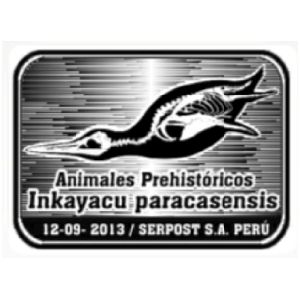 |
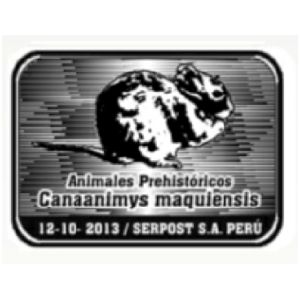 |
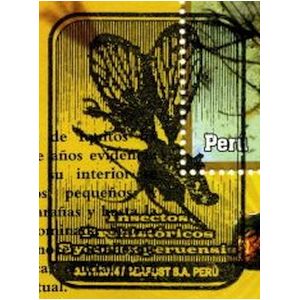 |
| 10.01.2017 "Prehistoric Animals" [2] | 14.11.2022 "Plesiosaur" | |
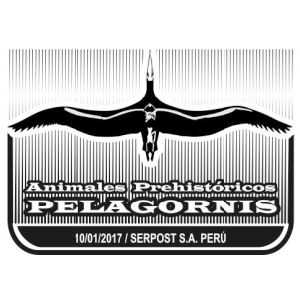 |
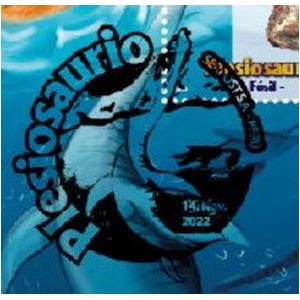 |
|
Other postmarks of Peru to consider: Natural History Museum
Legend is here| 04.10.2013 "95th Anniversary of the Natural History Museum" [A1] [FDC] | 11.02.2019 "100th Anniversary of the Natural History Museum" [A1] | |
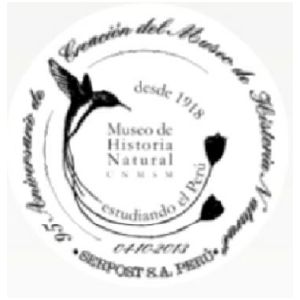 |
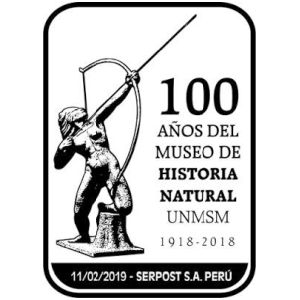 |
|
References:
- [R1] Peru:
Wikipedia,
WikiTravel,
Flag Counter
- [R2] Postal History and Philately of Peru:
Wikipedia,
Links to official website of the Post Authority, stamp catalog and a list of new stamps of Peru are here. - [R3] Antonio Raimondi: Wikipedia,
- [R4] The Natural History Museum (Museo de Historia Natural) in Lima: official website (in Spanish), Wikipedia.
- [R5] Serpost: official website
Acknowledgements:
Many thanks to Dr. Peter Voice from Department of Geological and Environmental Sciences, Western Michigan University, for the draft page review and his valuable comments.
| << previous country | back to index | next country >> |